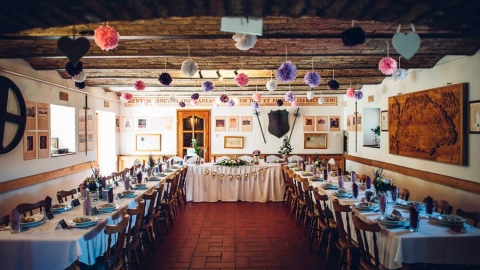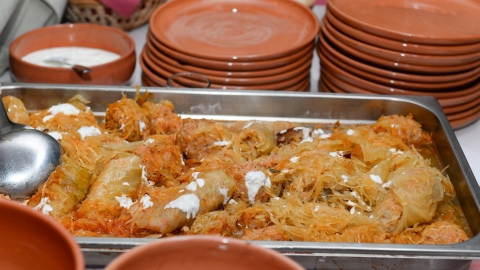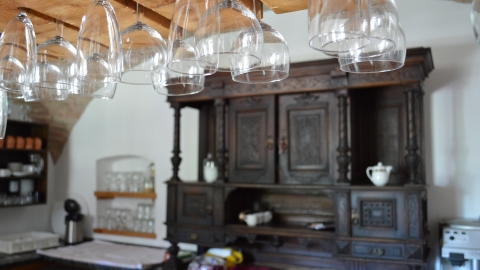Introduction
Among Hungarian towns radiating historical atmosphere Pápa is among the most beautiful ones with its baroque heritage.
Pápa was in its prime in the 18th century as the centre of estates of the Eszterházy family.
Fő tér or Main Square, the small streets and residential buildings in its environs and the Palace of Count Eszterházy were built in this age. Thanks to the abundant Tapolca Brook the vicinity of the town was a paradise of water mills.
Leaving its springs, the brook started to drive the first mill at Forrásfő after only a 200m route. The history of Pápa is inseparable from mills.
The first plausible mentioning of the settlement in 1061 occurred also in connection a transaction affecting a mill: Comes Ottó "...molam in Papa..." - donated a mill to the abbey established by himself. From the very beginning, mills
didn't serve exclusively grinding of cereals, but were used for cloth milling or wood sawing (saw mills), as well. Tapolca Brook powered the following mills: Forrásfő Mill, Forrásfő Cloth Mill, Tapolcafő noble Comnitz Mill,
Simaháza Bishop's Mill, Simaháza Chapter Mill or Cloth Mill, Döbrés Mill, Zavar Mill, Papiros (paper) Mill, Hatkerekű (six-wheel) Mill, Igal Mill, Sávoly Mill, Csinger Mill, Nagyhantai Cloth Mill, Bogáts Mill, Agyaglik
"camerális" Mill, Kishanta or Benediktus Mill, Hódoska or Uk Mill, Kapitány (Captain's) Mill at Szélesvíz section, Város (town) Mill, Tízes ( number ten) Mill, Mester or Marok Mill, Parochiális (parochial) or Pap (priest) Mill, Küllü
Mill (donated by the Garai family to the Order of Saint Paul the First Hermit at Porva), Fehér Mill, Borsosgyőr Mill, Asszonyfalva Mill, Börhend Mill, Upper Acsád Mill, Lower Acsád Mill, Alsógörzsöny Mill, Felsőgörzsöny Mill
and Marcaltő Mill. Regrettably water mills lost the competition against rolling mills by the end of the 19th century. In spite of this fact, many of them remained in the business form a long time to the benefit of the locals. But the
nationalization process after WWII put an end to their historical carrier. Some of them were immediatelly stopped while others continued their operation as "kolkhoz" graining plant. Flour appeared on the shelves of stores soon, and
nobody sent his grain to the mills to have it ground. No private person had grain anymore: all plough lands were communized by the socialist cooperatives. Large mill buildings became warehouses or residential houses for several
families. Nobody took care of their protection afterwards. Their building material became prey and were re-used as construction material or fuel. Some of them tumbled down... Today there is not a single mill in Pápa, the town of mills
where the reminiscences of this ancient profession could be illustrated like in an industrial monument.
But this will not be so longer...
The last owner of Hódoska or Uk Mill was Károly Edvy therefore this is also called as Edvy Mill. In 2001, the grand child of Károly Edvy, Mr Csaba Sántha bought the building back and started the renovation of the mill and at the
same time the construction of the guest house.
If there is anything we can do to make your stay more enjoyable, please let us know and we will be keen to help wherever possible.
At the end of your stay, you will find a short feedback form in your room to help us understand the areas of our service that you value most and areas where we can improve.
We are committed to acting on this feedback to ensure that we continue to deliver great service to our guests.




